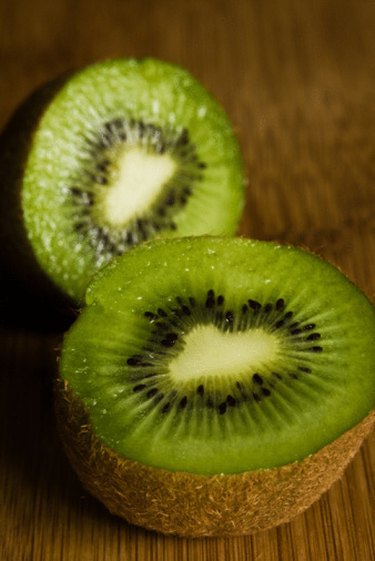A Deep Dive Into Kiwi Cultivation: Introducing the Methods, Difficulties, and Potential for Sustainable Farming
In this article, we will certainly take you on a deep dive into the techniques, difficulties, and capacity for sustainable farming in the globe of kiwis. Discover the ideal growing problems, innovative cultivation strategies, and the lasting techniques that can unlock the complete capacity of kiwi farming.
Optimal Expanding Conditions for Kiwi Plant Kingdoms

Cutting-Edge Growing Techniques
To optimize kiwi cultivation, use sophisticated strategies that improve productivity and sustainability. One such technique is accuracy agriculture, which makes use of innovative modern technologies like drones, GPS, and remote noticing to keep track of and take care of plants much more efficiently. Drones equipped with multispectral electronic cameras can catch high-resolution photos of kiwi plants, making it possible for farmers to examine their health and detect any signs of illness or tension. General practitioner innovation allows for exact mapping and tracking of the kiwi creeping plants, maximizing irrigation and fertilizing methods to ensure that each plant gets the necessary nutrients and water. An additional advanced strategy is upright farming, which includes expanding kiwi plants in stacked layers making use of synthetic lights and climate-controlled environments. This technique optimizes land usage efficiency and minimizes water consumption, making it suitable for urban areas or areas with minimal arable land. Additionally, hydroponics and aeroponics systems are getting appeal in kiwi cultivation. These soilless growing approaches provide plants with a nutrient-rich service or haze, respectively, advertising faster development and higher yields. By accepting these sophisticated techniques, kiwi farmers can achieve higher efficiency, enhance source utilization, and contribute to lasting farming practices.
Difficulties Faced by Kiwi Farmers
Facing countless challenges, kiwi farmers must navigate via numerous barriers to make certain successful cultivation and lasting farming techniques. Among the major challenges they face is environment irregularity. Kiwi plants call for a specific environment to grow, with cool winters and cozy summertimes. Uncertain weather condition patterns, such as extreme temperature levels, frost, and drought, can disrupt the development and development of kiwi plants. Farmers need to constantly check weather prediction and carry out methods like watering, frost security, and color cloth to reduce the unfavorable results of environment irregularity.
Another significant obstacle for kiwi farmers is illness and parasites. Kiwi creeping plants are at risk to a variety of insects, consisting of mites, aphids, and thrips, which can harm the fallen leaves and fruit. Furthermore, illness like Psa (Pseudomonas syringae pv. actinidiae) and botrytis can seriously influence kiwi manufacturing. Farmers must employ integrated bug management methods, such as regular surveillance, organic control techniques, and correct cleanliness, to take care of and avoid pest and illness episodes.
Furthermore, kiwi farmers deal with labor and labor expense problems. Kiwi growing calls for labor-intensive activities, such as pruning, harvesting, and trellising. Discovering proficient workers that are educated about kiwi farming techniques can be tough. Labor costs can be high, especially during peak seasons. Farmers need to buy training programs, mechanization, and reliable labor administration methods to optimize productivity and decrease labor expenditures.
Sustainable Farming Practices for Kiwi Growing

To guarantee sustainable kiwi growing, you can execute an array of methods that promote environmental stewardship and long-lasting practicality of your ranch. Kiwi plants require a significant quantity of water, however extreme watering can lead to water waste and soil disintegration. Embracing sustainable energy methods, such as using solar power or investing in energy-efficient technologies, can lower your ranch's carbon impact and contribute to an extra sustainable kiwi farming system.
Unlocking the Potential of Kiwi Farming
By applying lasting farming techniques, you can unlock the complete capacity of kiwi farming while minimizing ecological influence. Kiwi farming has tremendous capacity for growth and earnings, yet it also Bonuses includes its own set of obstacles. To fully open this capacity, it is essential to take on sustainable techniques that not only optimize return and high quality but additionally guarantee long-lasting practicality.
One key element of opening the potential of kiwi farming is optimizing irrigation techniques - what do kiwis taste like. Kiwi plants need a particular quantity of water to thrive, and by using effective irrigation systems such as drip watering or accuracy sprinklers, you can lessen water wastage and reduce the risk of waterlogging or dirt disintegration
Another important factor is dirt health and wellness administration. Productive and healthy soil is important for the development and development of kiwi plants. By applying practices such as cover chopping, plant rotation, and organic fertilizing, you can boost dirt framework, improve nutrient availability, and decrease the requirement for chemical inputs.
Furthermore, integrated bug management (IPM) strategies are essential in unlocking the capacity of kiwi farming. By taking on IPM strategies such as biological insect control, scent catches, and plant monitoring, you can efficiently handle parasites and diseases while minimizing using chemical pesticides.
Verdict
Finally, kiwi growing holds great prospective for sustainable farming techniques. By executing advanced methods and getting rid of the challenges about his dealt with by farmers, we can open the complete potential of this fruit (what do kiwis taste like). With optimum expanding conditions and check my site a focus on lasting techniques, kiwi farming can prosper while reducing environmental impact. Order a kiwi and support the future of lasting farming!
Discover the optimal growing problems, advanced cultivation techniques, and the sustainable techniques that can open the complete capacity of kiwi farming. By embracing these innovative techniques, kiwi farmers can attain better performance, enhance source application, and add to sustainable farming practices.
Facing various challenges, kiwi farmers should navigate via various barriers to make sure effective cultivation and lasting farming methods.By implementing lasting farming techniques, you can open the full potential of kiwi farming while minimizing ecological effect.In verdict, kiwi farming holds fantastic potential for sustainable farming methods.